Among the multitude of running shoe options, lightweight running shoes stand as a testament to innovation, engineering, and design. They are the choice of athletes who crave speed, but maybe aren’t entirely focused on just a race day shoe. These are going to be great from your tempo runs, to your fast workouts and in to race day when needed.
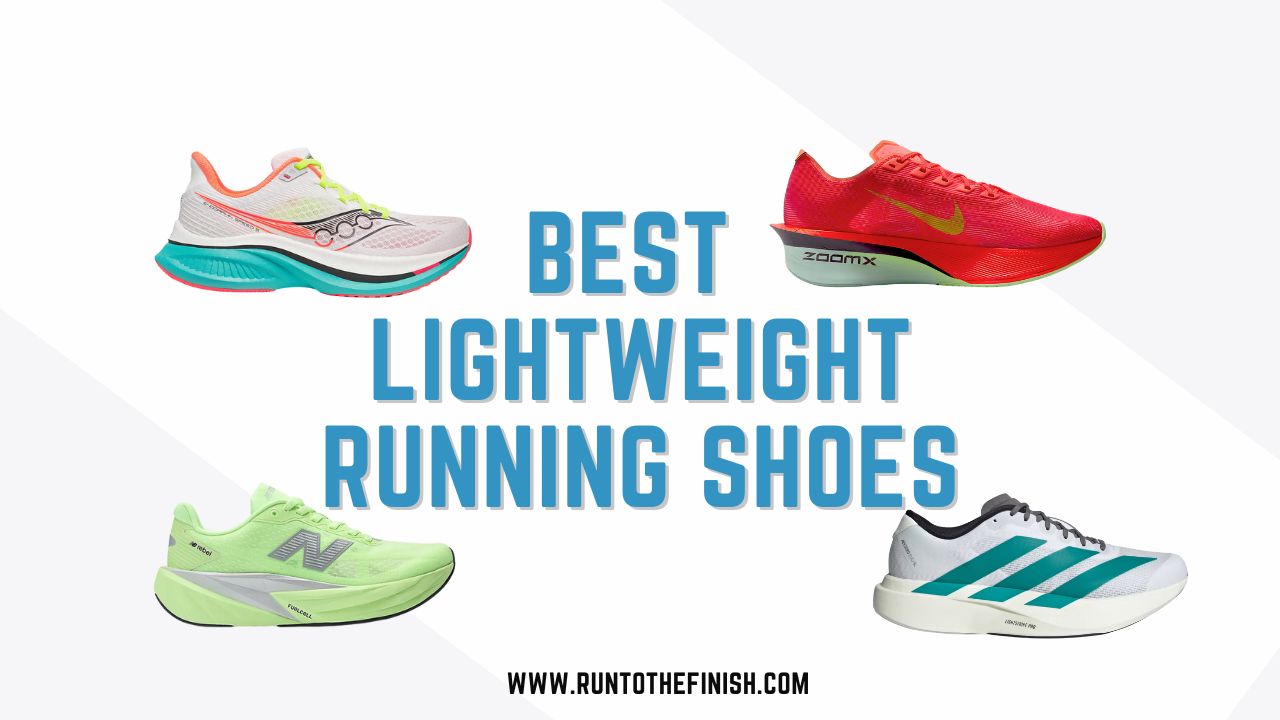
A couple of extra ounces may not seem like much at the start, but add a few miles and it starts to make all the difference. That’s why lightweight running shoes are a hot topic among runners these days.
The quest for the best lightweight running shoes involves striking a balance between weight, cushioning, support, and durability. The ideal pair should complement your running style, whether you’re pounding the pavement for miles on end, sprinting towards the finish line, or simply embracing the joy of a leisurely jog.
In this comprehensive guide, we’ll dig in to some of the top lightweight running shoe models in the market, discuss crucial factors to consider when making your choice, and provide practical tips for when they’ll be most beneficial.
What you will not find in this list is a bunch of racing flats. I don’t have a whole lot of you coming here for track and field, so instead we are thinking more of the distance runners from the 5K to marathon.
Best Lightweight Running Shoes of 2025
- Best Carbon Fiber Lightweight Running Shoe: Nike Vaporfly 4
- Best Everyday Lightweight Trainer: Saucony Kinvara 16
- Best Tempo Run Lightweight Shoe: New Balance FuelCell Rebel v5
- Most Affordable Lightweight Running Shoe: Brooks Launch 11
- Best Cushioned Lightweight Trainer: Adidas EVO SL
- Best Lightweight Stability Shoe: Saucony Tempus 2
- Best Nylon Plate Lightweight Running Shoe: Saucony Endorphin Speed 5
What is Considered a Lightweight Running Shoe?
Lightweight running shoes are defined by their emphasis on minimal weight and a design that prioritizes reduced bulk.
These shoes typically weigh significantly less than traditional running shoes, often falling in the range of 6 to 9 ounces (170 to 280 grams) per shoe. This emphasis on weight reduction is a fundamental characteristic of lightweight running shoes.
In addition to their low weight, lightweight running shoes often feature a streamlined and minimalistic design. They seek to eliminate unnecessary padding and structure, ensuring that every component serves a purpose in enhancing the runner’s experience.
The focus on weight reduction means that these shoes are tailored to minimize the amount of material used while still providing essential support and cushioning.
7 Best Lightweight Running Shoes
One major advantage is that lightweight running shoes encourage better running form. With less weight on your feet, it’s easier to maintain a natural and efficient gait, holding good running form and reducing the likelihood of injuries.
The other theory is that they also help minimize fatigue. Anyone who’s lugged around in heavy shoes knows how taxing it can be over time. By cutting the weight of the shoe, you’re making it easier for yourself, especially in the later stages of long runs or races.
Here are a few of my favorite lightweight shoes currently on the market. As always, I try to give you shoes from a variety of brands because we often have one that seems to fit us best. Many of them are newer versions of popular styles that have been updated to be even lighter than before.
If you’re looking for only the best carbon plate running shoes, checkout my previous article. Today we’re going for a variety!
#1 Best Carbon Fiber Lightweight Running Shoe: Nike Vaporfly 4
The Vaporfly has a cult following among elite runners. This shoe feels like a race-day rocket the moment you start moving. The full-length Nike ZoomX foam is on the firmer side of squishy—it’s lightweight and super bouncy, but not so soft that you lose any sense of ground contact.
If you’ve worn the Vaporfly 3, you’ll notice some differences here. The midsole has been slimmed down slightly, and the stack height has been reduced, making it the lightest version yet.
Runners with narrow to standard feet should feel at home, but if you’ve needed wider fits in other brands, you might find it tight upfront.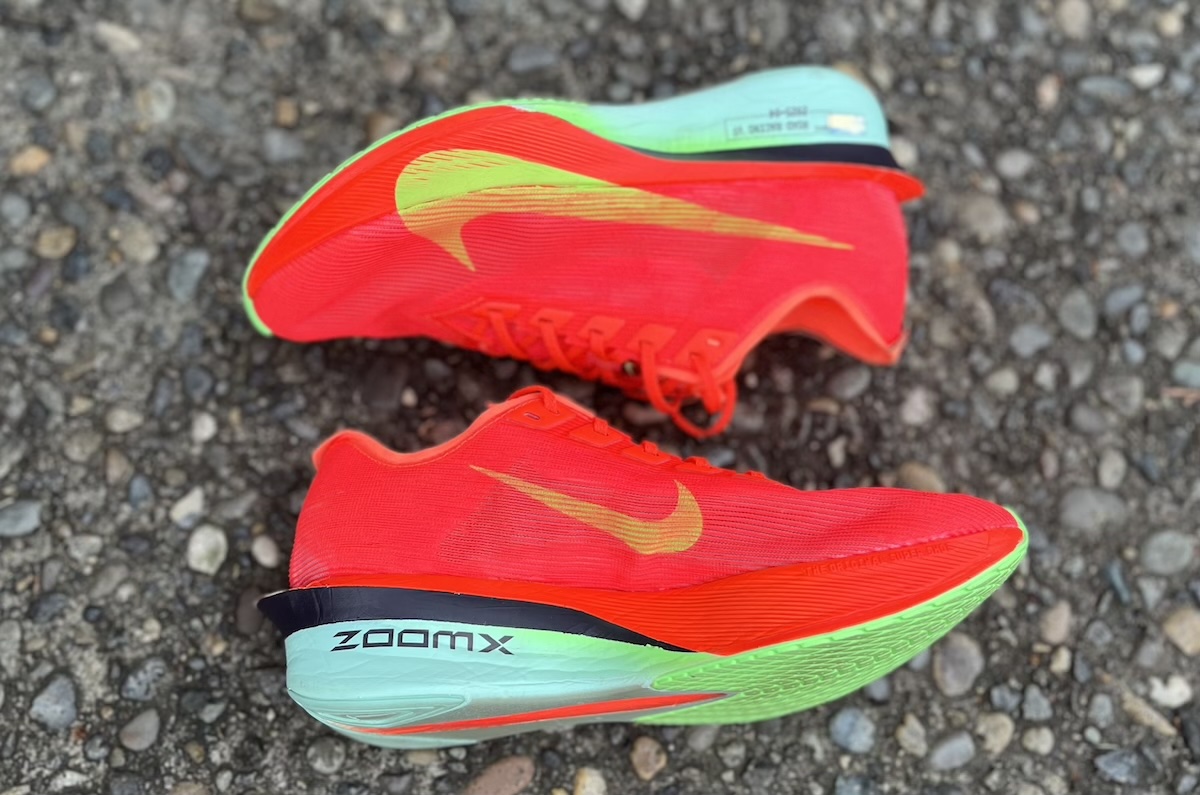
Runners who like a super lightweight, responsive feel and don’t mind a more snug, race-day fit will love the Vaporfly 4. It’s ideal for chasing down PRs from the 5K to the half-marathon (possibly the marathon)!
-
- Weight: 5.3 oz Women’s , 6.7 oz Men’s
- Heel Drop: 6 mm
- Stack Height: 35 mm
- Available in 3 colors
- Not available in wide
- Available on Nike.com $260
- Check out our full review of the Nike Vaporfly 4 here >>
#2 Best Everyday Lightweight Trainer: Saucony Kinvara 16
As a long-time fan of Saucony’s Kinvara line, I was stoked to find out that even with the growing popularity of their Endorphin range, the Kinvara isn’t being left in the dust.
I’ve truly run in so many of models of this and often recommend it for the low heel to toe drop if anyone has dealt with IT band issues. The Kinvara continues to be a lightweight, nicely cushioned trainer that you’ll want to keep grabbing for.
I’m so excited that for the 16 Saucony went back to the original stack height of 29mm! There was also a small change to the geometry of the midsole, but as someone who has worn this shoe for YEARS, it didn’t really stand out to me.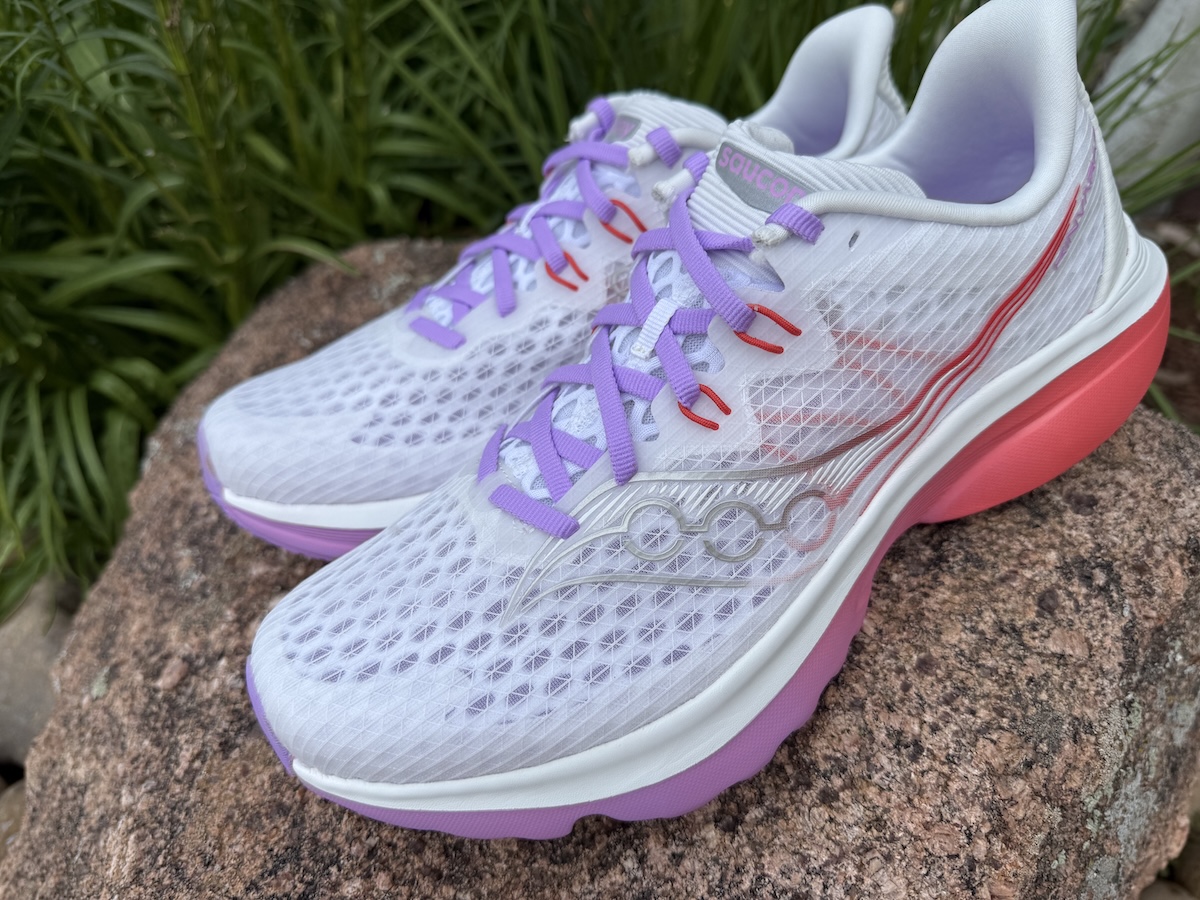
The Saucony Kinvara 16 feels smooth and stable. If you want to pick up the pace in these, absolutely go for it! The PWRRUN foam is going to provide even more energy return, really giving the snappier feel underfoot.
The shoe’s upper is made from a breathable mesh material that allows for maximum airflow and helps to keep feet cool and dry. This one has a bootie style fit, meaning that the tongue is attached. I LOVE this because it means it’s not going to be moving all over while I run.
- Weight: 6.3 oz Women’s. 7.0 oz Men’s
- Heel drop: 4 mm
- Stack Height: 29mm
- Available in 9 colors
- Available in wide
- Available now on Saucony.com ($130)
- The 15 is on sale and not as snappy, but still a really good option for big savings
- Read our full review of the Saucony Kinvara 16 here >>
#3 Best Tempo Run Lightweight Shoe: New Balance FuelCell Rebel v5
The evolution of the Rebel has been fast. Its third version was rather polarizing; it wasn’t as effective at faster track workouts, lost a lot of its bounce, but remained a good tempo option. The fourth version saw a reintroduction of that lost bounce but there were issues with a few key design and fit elements.
The New Balance FuelCell Rebel v5 solves a lot of those issues and cements its place as a very capable and fun lightweight trainer and tempo shoe.
But, this shoe is known for its energy return, with the v5 being even more responsive than the previous version. Could be a good option if you struggle with issues like plantar fasciitis because it’s not as soft as others.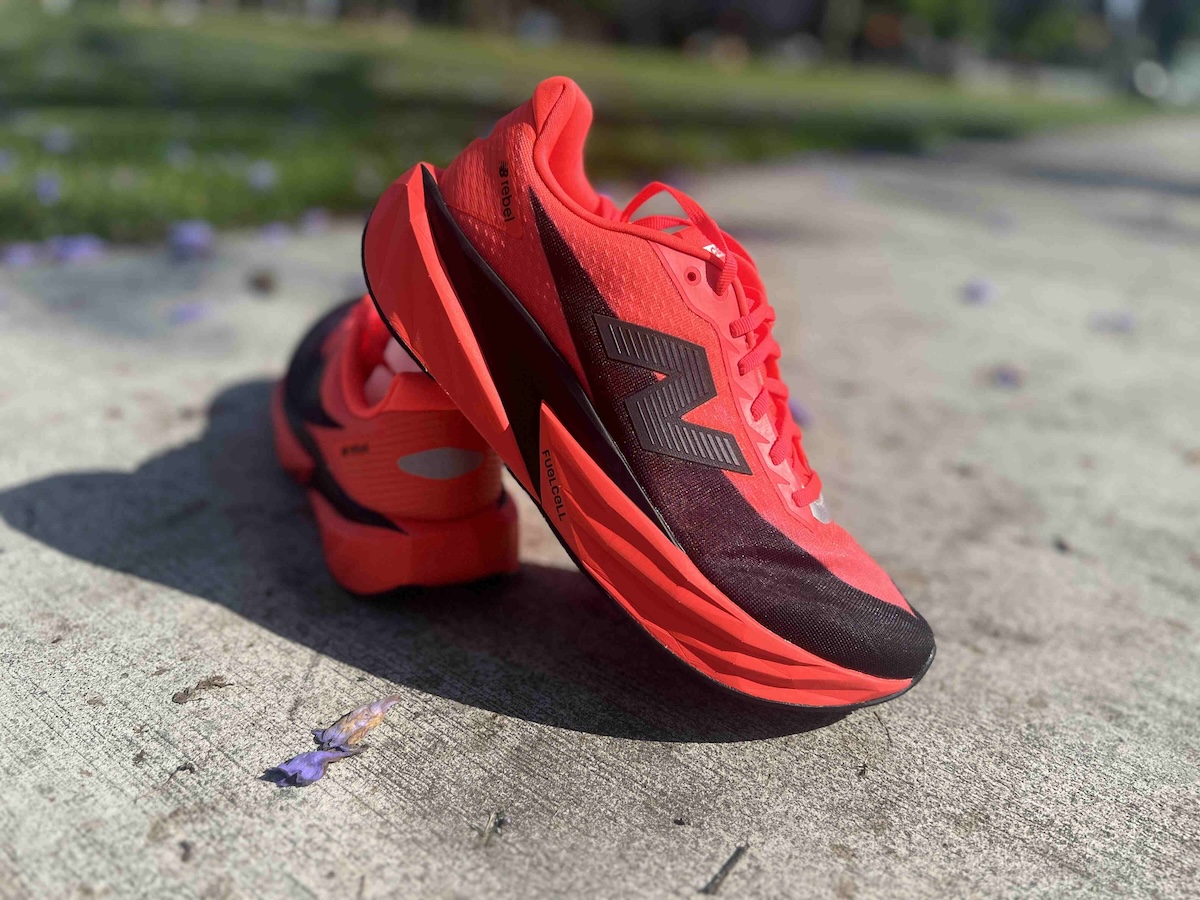
While the ability to tear through fast track workouts may be a thing of the past for the Rebel, it is still an excellent non-plated lightweight daily trainer, tempo shoe, and affordable racing shoe for anything from the 5K to the half marathon.
-
- Weight: 6.3 oz Women’s, 7.9 oz Men’s
- Heel drop: 6mm drop
- Stack Height: 35mm
- Available in wide sizes
- Available in 8 colors
- Check it out at Newbalance.com for $140
- Read our full review of the New Balance FuelCell Rebel v5 here>>
#4 Most Affordable Lightweight Running Shoe: Brooks Launch 11
The Brooks Launch 11 is a simple shoe that makes a great daily trainer. At 7.1 oz for women’s and 7.7 oz for men’s, it’s not the lightest shoe on the list, but it’s an affordable option that still falls into the lightweight category.
The Brooks Launch is equipped with adequate cushioning, which strikes a balance between responsiveness and shock absorption. This makes it suitable for various types of runs, from daily training sessions to faster-paced workouts.

Runners often praise the shoe for its versatility, making it a go-to option for those who enjoy mixing up their training routines. Its breathable upper and flexible construction enhance comfort during longer runs, and the shoe’s durability ensures it can withstand the rigors of regular training.
This shoe is like the Toyota Corolla of footwear, nothing fancy, but super popular, reliable, and you know it will get the job done.
For neutral runners looking for an all around shoe that combines performance with comfort, the Brooks Launch 11 is certainly worth considering.
- Weight: 7.1 oz Women’s, 7.7 oz Men’s
- Heel drop: 8 mm
- Stack Height: 35.5mm
- Available in 5 colors (men and women’s colors differ)
- Available in medium and wide
- Available on Brooks.com for $120
- Check out our full review of the Brooks Launch 11 here>>
#5 Best Cushioned Lightweight Trainer: Adidas EVO SL
This is going to be the perfect shoe to carry you through long runs, while still allowing you to pick up the pace for half and even full marathon miles.
You’re not going to find all the fancy bells and whistles packed into the midsole, just some nice foam underfoot.
Lighstrike Pro is their top of the line foam. It’s the lightest with the best energy return and we’re finding it here in a $150 daily trainer, that’s fairly unusual.
The Adidas EVO SL is not as bouncy as a carbon plated shoe and not as soft as a daily trainer. It’s a blend right in the middle that allows for that energy return, but if you’re used to something like the Nimbus or NB 1080 that are super soft it could feel firm.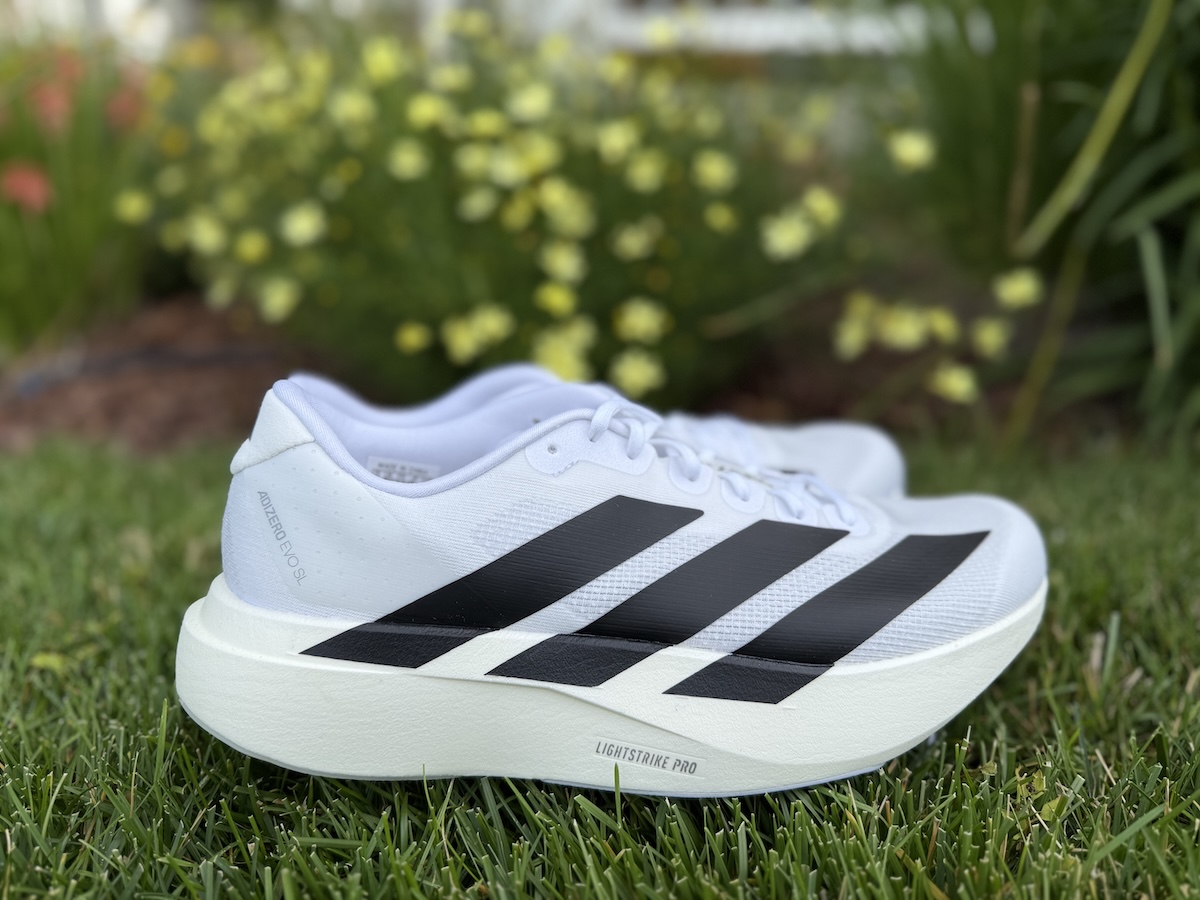
While I’m not reaching for this shoe on the days I want to do 7:00min repeats, I did enjoy it on longer miles where I wanted to put in some pick ups. And in general, a lightweight shoe, with energy return on a long run is a really fabulous thing for the legs no matter the pace.
- Weight: 6.6 oz Women’s, 7.9 oz Men’s
- Heel drop: 6 mm
- Stack Height: 38mm
- Available in a whole lot of colors
- Available in wide
- Available now on adidas.com for $150
#6 Best Lightweight Stability Shoe: Saucony Tempus 2
Our speed runner Jeff was thoroughly shocked and impressed by this shoe. Not only does he usually eschew stability, but he couldn’t believe that it really picked up the pace!
The major con of this shoe is that it does run more narrow and has a bit of a shallow toe box, so it’s not going to be for everyone.
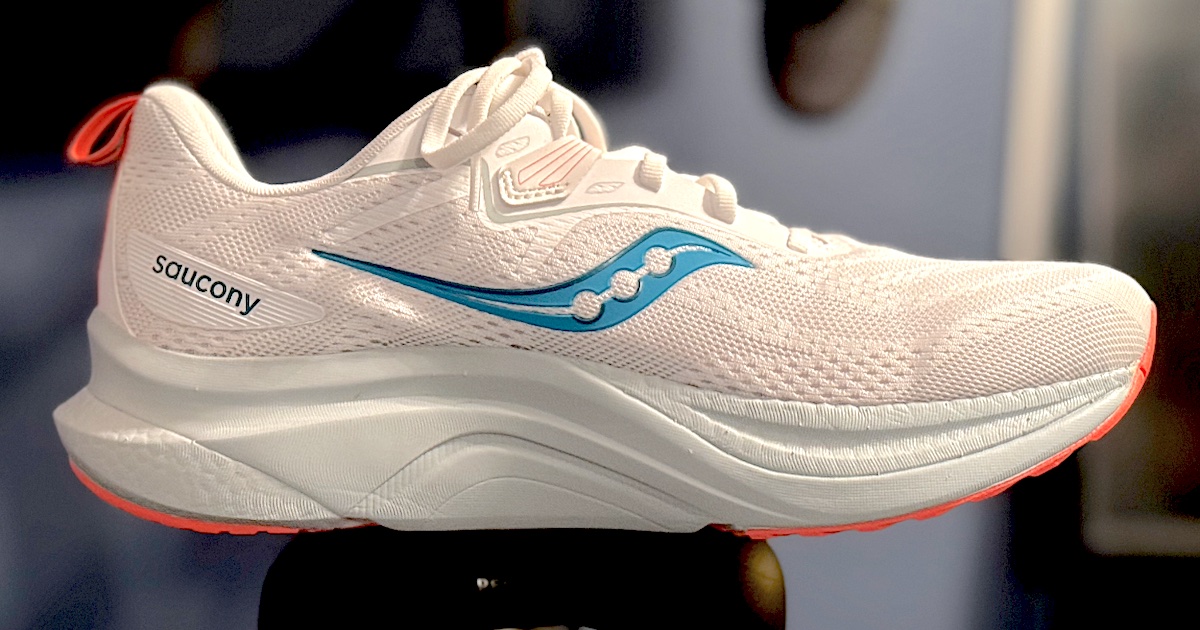
This shoe performs adequately at relaxed paces but truly comes alive during uptempo efforts. The midsole is bouncy and responsive, and my legs felt fresh during the final miles of a half marathon as well as multiple long runs.
It’s also one of the few stability shoes to feature a superfoam, (PWRRUN PB) so the ride is remarkably cushioned
- Weight: 8.2 oz Women’s, 9.4 oz Men’s
- Heel Toe Drop: 8mm
- Available in 12 colors
- Not available in wide
- Available at Saucony.com for $160
- Read our full Saucony Tempus 2 Review
#7 Best Nylon Plate Lightweight Running Shoe: Saucony Endorphin Speed 5
When you want to get the feel of carbon fiber, but want to also save a little money…welcome to the world of Nylon plate shoes. The Saucony Endorphin line of running shoes is a collection of performance-oriented footwear designed to elevate the running experience to new heights.
Saucony has built this series with an emphasis on speed, efficiency, and comfort, making it particularly popular among competitive runners, long-distance athletes, and those seeking to achieve their personal bests.
If you’ve ever had to pack a second pair of shoes just in case you want to toss in a little speedwork, you’ll appreciate the versatility here. The Endorphin Speed 5 is that rare mix of lightweight and responsive without being overly aggressive.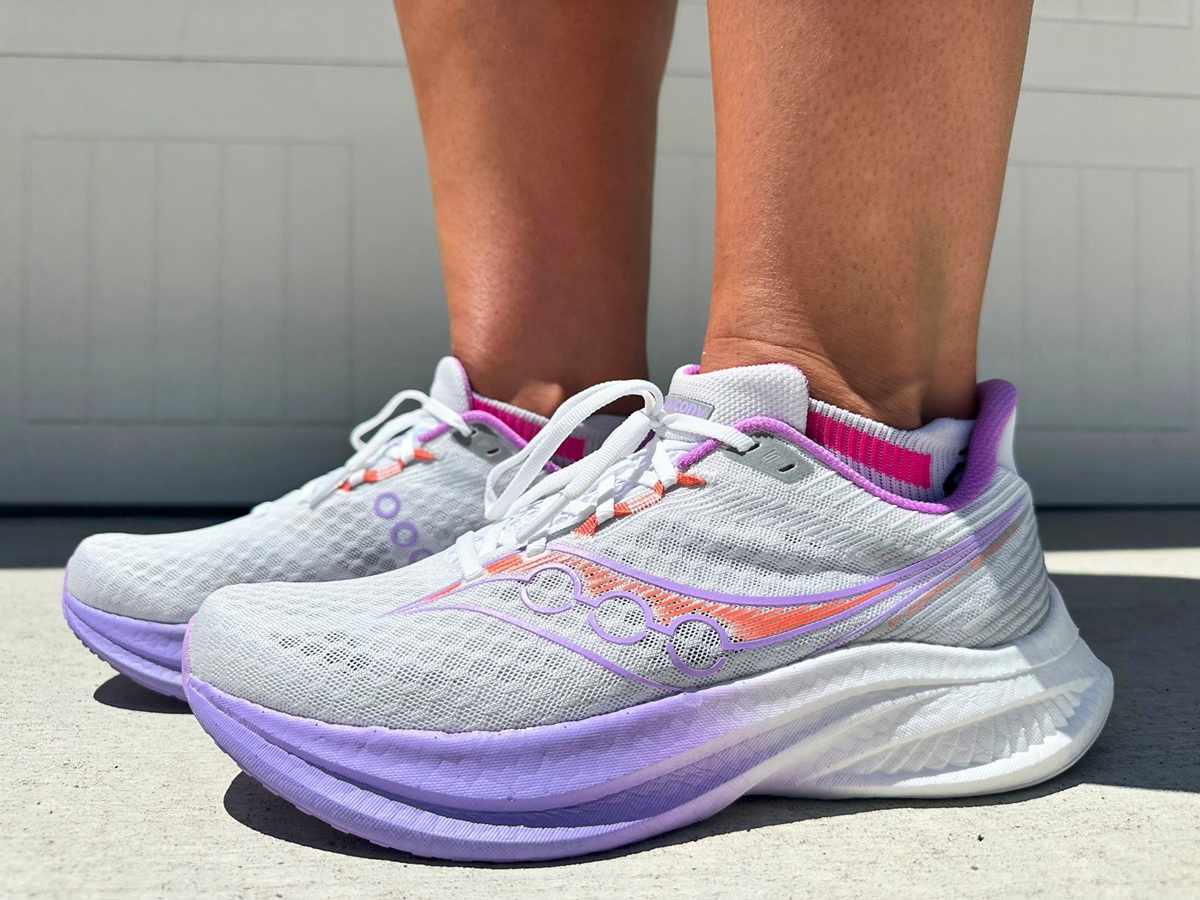
It’s a solid pick for interval workouts, tempo runs, and anything fast-paced. But Saucony also built it with enough cushioning and durability to carry you through longer training runs, too, making it a pretty versatile option to have in your rotation.
Saucony made a smart move with the Speed 5 by extending the rubber outsole all the way to the end of the heel, which helps with durability; you’re less likely to see the sole breaking down after just a handful of runs.
- Weight: 8.4 oz Men’s, 8.1 oz Women’s
- Heel drop: 8 mm
- Stack height: 36 mm
- Available in X colors
- Not available in wide
- Available from Saucony.com for $170
- Check out our full review of the Saucony Endorphin Speed 5 here >>
I recently did a full review of the even lighter Saucony Endorphin Pro 4. That however is a carbon plate shoe and the price jumps up to $225.
Are Lightweight Shoes Good for Running?
Lightweight running shoes can be a game-changer for runners who are serious about their performance. But they absolutely aren’t a requirement for great training or performances, we’re talking a matter of an ounce or two in many cases.
Beyond just the light feel, they often incorporate state-of-the-art materials designed to offer cushioning and support without the extra grams. This means you’re not just getting a shoe that’s light; you’re getting a shoe engineered to make every stride more efficient.
These materials can include anything from advanced foams to carbon fiber plates, all aiming to deliver better energy return.
Simply put, lightweight shoes can make your runs not only more efficient but also far more enjoyable. With less material weighing you down, it’s easier to achieve that “runner’s high” we all chase.
It’s important to recognize that lightweight running shoes are not universally suitable for all runners. The choice of the right lightweight shoe depends on individual running styles, foot shapes, and specific goals. While some runners thrive with the minimalism and speed of ultra-light options, others may prefer a bit more cushioning and support.
Is it Better to Run in Heavy or Light Shoes?
Determining the “better” shoe really boils down to your individual needs, such as your running style, foot structure, and what you’re looking to get out of your runs.
Lighter shoes are generally great for improving your running economy because you’re spending less metabolic energy for the same pace, which is a massive plus.
Heavier shoes sometimes offer greater support and durability, making them ideal for those who need more structural integrity—perhaps due to overpronation—or who frequently trail run on rugged, uneven terrains.
And remember we are often talking ounces here, so what matters the most is finding the shoe that fits you and feels good. There are actually studies proving that the better feeling shoe provides a better performance, regardless of the other factors.
So, the answer isn’t one-size-fits-all; it’s more about finding the right tool for the job.
Looking for additional running shoe tips?
- How To Properly Fit Running Shoes
- Lacing Techniques to Reduce Foot Pain
- How Long Do Running Shoes Last?
- Brooks vs Hoka Running Shoes
- Best Running Shoes for Flat Feet
- How Many Laps Around a Track is a Mile?
Other ways to connect with Amanda
Instagram Daily Fun: RunToTheFinish
Facebook Community Chatter: RunToTheFinish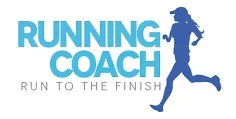
Sign Up to Receive a Weekly Newsletter with Top Running Tips and Laughs
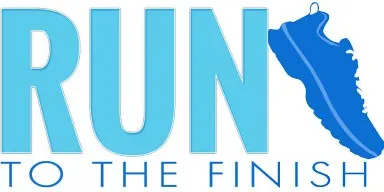


 Core Strength for Runners: The Foundation Every Fast Runner Builds On
Core Strength for Runners: The Foundation Every Fast Runner Builds On